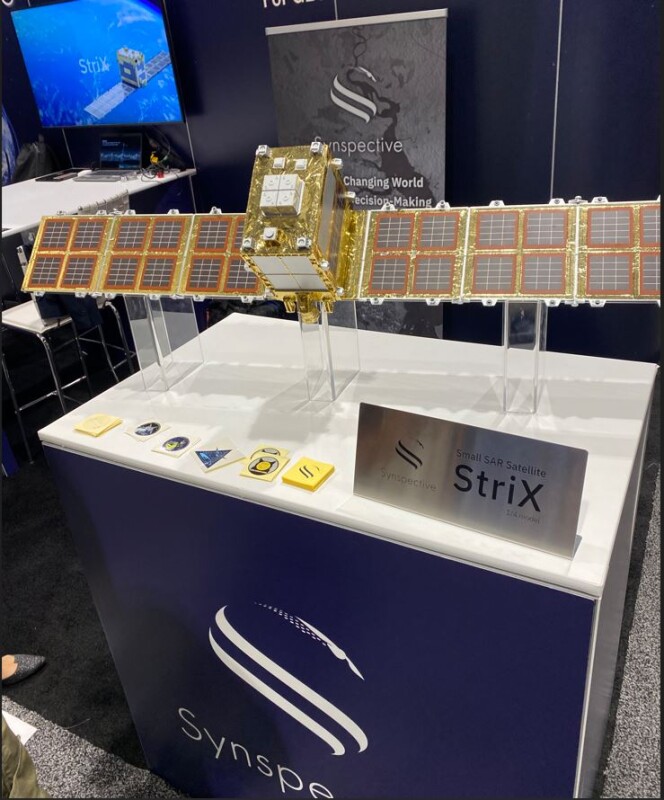This week in Orlando, Florida, companies and organizations from across the geospatial spectrum met for the annual GEOINT Symposium, put together by the United States Geospatial Intelligence Foundation (USGIF). The 20th anniversary of the first GEOINT Symposium featured representatives from 30 countries, with 215 speakers from across the intelligence and geospatial sectors and 245 organizations on the exhibit hall floor. Geo Week News has the opportunity to attend this year’s event, and as part of the travels was able to catch up with Motoyuki Arai, founder and CEO of Japanese Earth observation satellite manufacturer Synspective, for a short conversation.
Given that this particular conference is, of course, focused on the intelligence piece of the geospatial industry, satellites dominated the show floor. That put Synspective in a good position as they are providers of Earth observation imagery. At this year’s GEOINT, the company was highlighting their newest satellites, the StriX-3 and StriX-4, the former of which was just recently launched and whose first imagery was just released late last month. Arai also noted the upcoming launch of the StriX-4 as well as a new factory being built in Japan, allowing them to launch more into their constellation when that is finished later this year.
Geo Week News also spoke with Arai about the use cases around this imagery and some of the parallels between the Japanese Earth observation ecosystem compared to that in the United States. On that latter point – and this was a point that was backed up by other conversations on the floor throughout the week – the main users of this data is still government. Intelligence is certainly a big part of that, but other use cases within government dominate the space as well. That includes, as Arai relays, things like inspections of crucial infrastructure and roads, and utilizing change detection for all kinds of monitoring.
That being said, the commercial sector is becoming a larger portion of this market, with the AI boom being a large part of that. Synspective has offered AI-powered capabilities – such as the aforementioned change detection – since before this recent generative AI-powered boom, but it’s undeniable that capabilities are improving thanks to improved compute power and increased investment. This is particularly useful for things like satellite imagery which include massive amounts of data. Arai points to construction and mining firms as examples of commercial entities who are utilizing this data in Japan.
Ultimately, even at a conference that was focused on the intelligence side of the equation, where satellite imagery plays a massive role, it’s clear that this data is becoming more accessible than ever for all sectors. Between significantly cheaper and more frequent launches increasing supply of the data and AI to help non-experts begin to parse it, this is one of the fastest growing sectors in the world right now, something that Synspective is seeing first hand at home in Japan and with their customers abroad.






